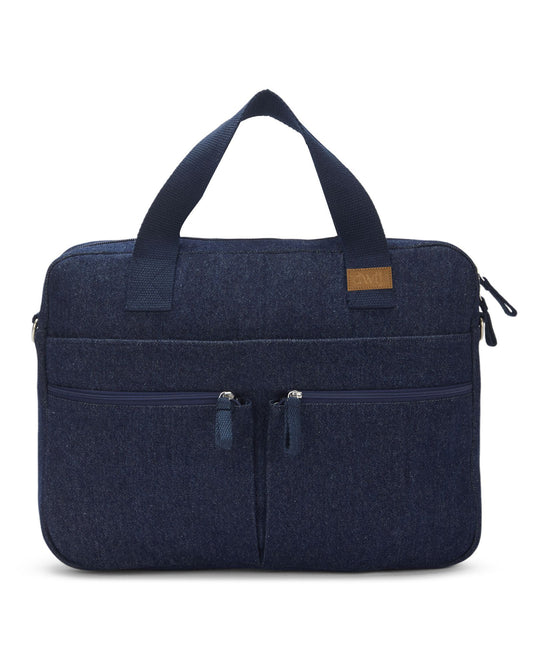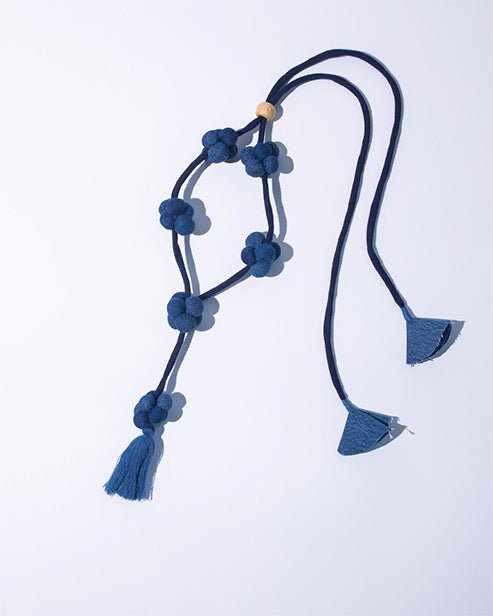It is often said that finding the right pair of jeans is a lot like finding an ideal life partner- It needs to fit just right. We all probably have that one old and worn-out pair in our closet, that we just refuse to give up because it fits perfectly well, and why not right?! Today, vintage jeans (and clothing) are making waves the world over. From celebrities to influencers, all fashion enthusiasts want to own something unique and vintage in their closets. This trend has now also found thrift fashion a new consumer base! While this has had a positive effect in most cases, the ‘vintage’ trend has also given rise to a new kind of fashion waste. With the demand increasing, many brands and labels have started creating collections that aren’t actually vintage but have that vintage look to fit your styling dreams. One of the most popular of these trends is that of ‘used look’ jeans. Though great to look at, these jeans come at a cost to the planet. With denim production already under the scanner for its massive use of natural resources, let’s take a quick look at why it’s a good idea to rethink the purchase of those distressed jeans: The Dilemma of Distressed Denim:
-
To no surprise, denim is a highly water-intensive fabric. However, the production of distressed denim goes a step further to add to these environmental woes. To give your jeans that ‘lived in’ look, manufacturers tend to use a chemical called potassium permanganate. Working with this chemical in large quantities has been reported as a reason for severe lung damage amongst factory workers. When large denim brands and fashion houses produce collections in mass quantities, this can cost wage workers their health and wellbeing.
-
Sandblasting- A common part of denim production processes, uses abrasive materials propelled at a high speed to give a shape and softness to denim. Although it has been banned in many countries, it is still used in parts of the world, since it is a fast and cheap way to create the desired look. This process of sandblasting to produce that worn-in look can also lead to silicosis in the lungs of the workers.
-
A while ago, the renowned environmental group- Greenpeace conducted a study of some of the top denim-producing towns in Asia. They tested the water outflows and found five heavy metals (cadmium, chromium, mercury, lead and copper) in 17 out of 21 water samples taken! Residents of the small towns where the waterways are affected rely on the same water for bathing, drinking and other forms of consumption. This could lead to a serious health concern for many.
-
In parts of China, they also discovered heavy metals like manganese in the rivers, which can be associated with brain damage. To give you further perspective, the Xintang province in China alone produces around 300 million pairs annually! The amount of chemical outflow and subsequent damage this can lead to is not unimaginable.
-
It is now estimated that 70% of Asia’s rivers and lakes are contaminated by the 2.5 billion gallons of wastewater from the textile industry. The large demand for denim the world over, has affected workers of developing nations most severely. These communities suffer from a high incidence of cancers, and skin issues to name a few.
-
To add to this, your distressed denim jeans are also designed to stretch. Stretch denim is made using an oil-based synthetic component of polyester, which is primarily plastic and does not break down with ease.

To sum up, even though it may seem like one pair to you, there’s a lot that goes into creating a wearable piece of sun-washed, snug-fit denim. However, every problem comes with its own solutions, so let’s take a look at some of the ways you can help reverse the damage!
Eco-friendly Solutions For Your Closet: Now you may wonder if that beautiful, distressed denim garment in your closet has a role to play in all of the damage as well. Does that mean you have to give up denim for good? What happens to the afterlife of the things you already own? And many such thoughts might have you feeling a tad eco-anxious. Before you let the guilt kick in, take a moment to reflect on these practical and environmentally conscious solutions that can have you make the most of your love for denim without comprising on your eco-ethics:
-
If you love that vintage look way too much, opt for a pair of vintage jeans over vintage-looking jeans! Today, several thrift stores around the world sell pre-owned, branded jeans so you might easily find what you’re looking for. Besides, with high-waist jeans back in trend, you may find some really unique collector’s pieces from past eras!
-
Try sustainable denim alternatives. With the rising awareness around denim’s environmental side-effects, many fashion labels have shifted to more eco-friendly alternatives. Look for brands that make jeans from organic fibres, use natural dyes and/or work with recycled denim.
-
Make your denim last. The one up-side to denim is that it is a highly durable fabric. One good pair of jeans, if taken care of, can last you a lifetime. By reusing and maintaining your denim, you can extend its life cycle and prevent these garments from polluting our landfills. To know how you can care well for your pair, read our detailed blog here. Once you’re done, a well-maintained piece can be further passed down or you can thrift it!
-
When you’re done with the pieces you own, opt to upcycle! You can either let your creative juices flow and try some DIY at home or you can send in your used denim to us! At Dwij, we use your pre-worn jeans to create 100% vegan and waste-free bags. To know how we do it, click here. If you’d like to check out our creations, click here!

Everything said and done, there is no denying that clothing and personal style are all ways of expression. Many see dressing as a way of art too. However, if a part of your conscience prioritizes the environment, then the same philosophy can help you express your love for the planet. By making responsible fashion choices, being ‘vocal for local’ and increasing your consumer awareness, you can do your bit to bring in some much-needed change!
------------------------------------------------------------------------------------------------------------
Sources:







